#A.F.L.-C.I.O.
Explore tagged Tumblr posts
Text
Monday's image: November 11, 2024
David Inshaw, November 11 Sky, Oil on canvas, 190 x 121.9 centimeters, Royal West of England Academy (RWA), Bristol, England
#mc_embed_signup{background:#fff; false;clear:left; font:14px Helvetica,Arial,sans-serif; width: 600px;} /* Add your own Mailchimp form style overrides in your site stylesheet or in this style block. We recommend moving this block and the preceding CSS link to the HEAD of your HTML file. */
Subscribe to Monday's image
* indicates required
Email Address *
First Name
Last Name
(function($) {window.fnames = new Array(); window.ftypes = new Array();fnames[0]='EMAIL';ftypes[0]='email';fnames[1]='FNAME';ftypes[1]='text';fnames[2]='LNAME';ftypes[2]='text';fnames[3]='ADDRESS';ftypes[3]='address';fnames[4]='PHONE';ftypes[4]='phone';}(jQuery));var $mcj = jQuery.noConflict(true);
#superhumanpower#DancingSpirit#DavidInshaw#November11sky#RemembranceDay#WorldWarI#oiloncanvas#RoyalWestofEnglandAcademy#Bristol#England#NYTimes#PrayersforVictims#IsraeliStrike#militarybombedhouse#Jabaliya#Gaza#burial#mourningthedead#community#grief#handsinprayer#UnionsGirdingforBlowbackofHarrisLoss#InPublicSector#WorryofBeingEliminated#SheddingUnionLabel#LatinosShiftRight#A.F.L.-C.I.O.#TrumpIsPulledToward2PathsOnRetribution#RevengeVersusUnity#PickForAttorneyGeneral
0 notes
Photo
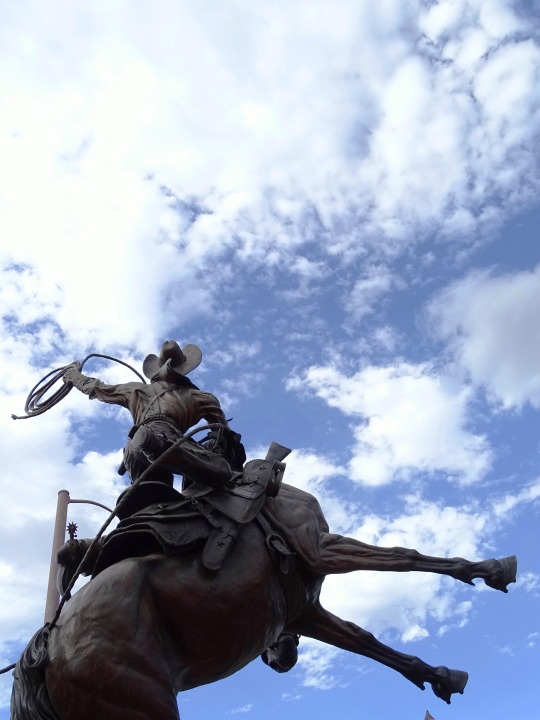

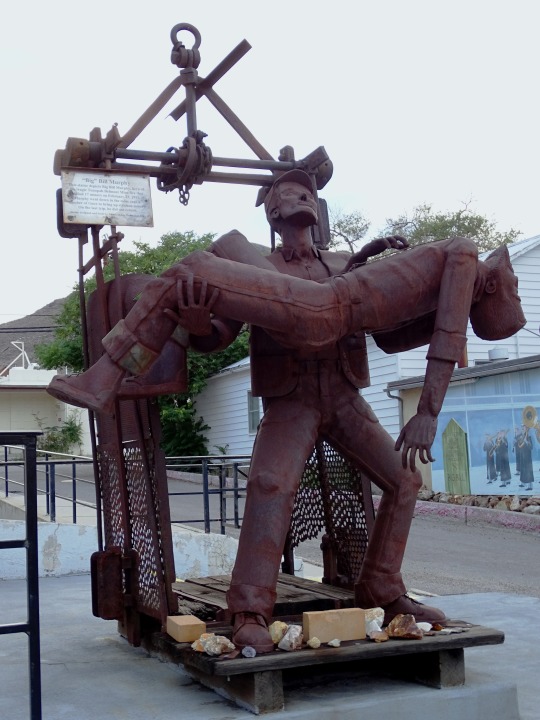
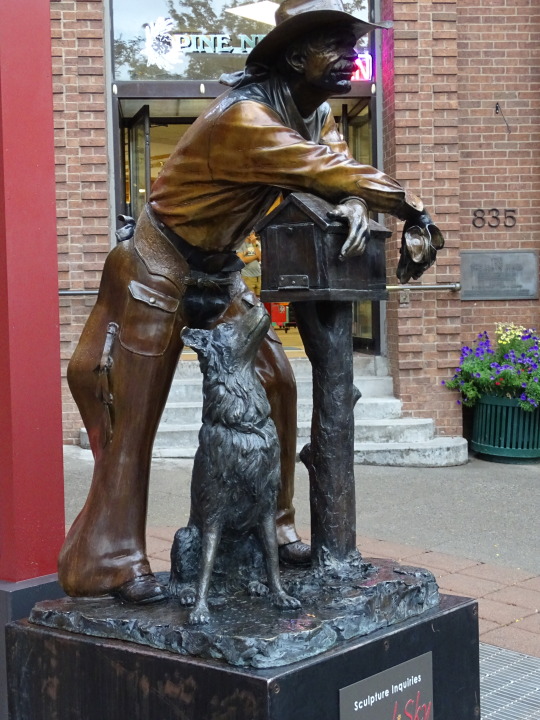
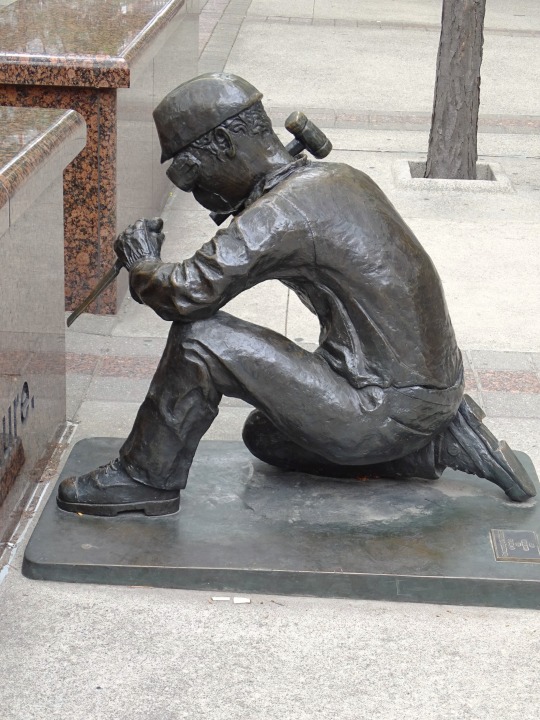
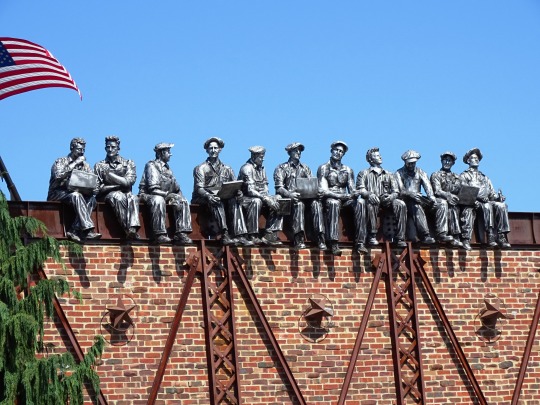

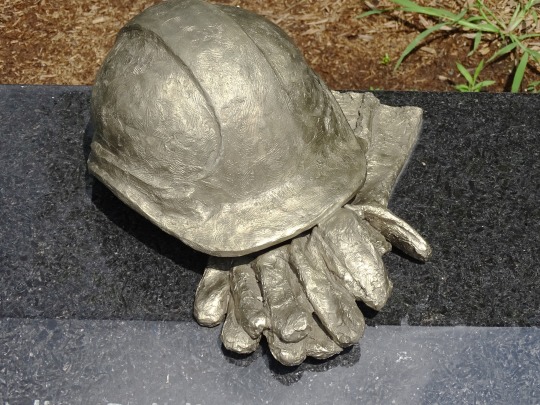
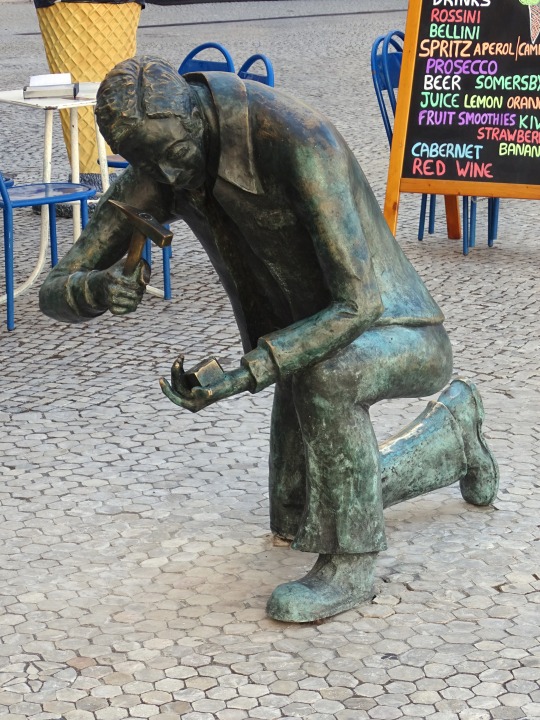
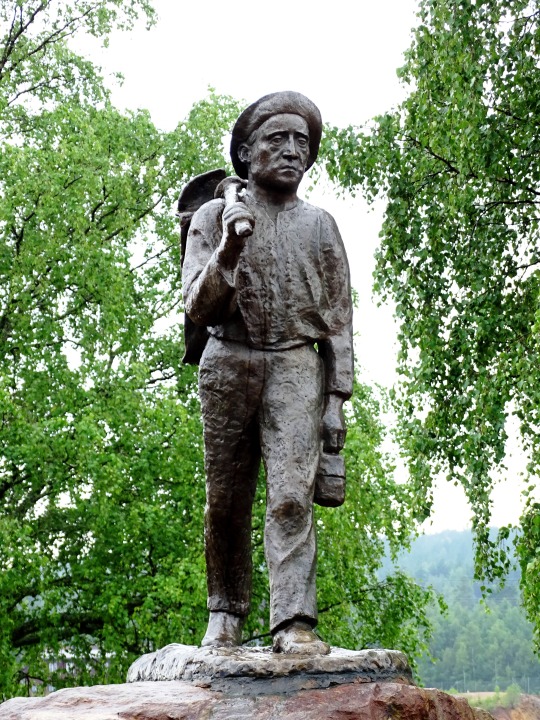
Workers Memorial Day
Workers’ Memorial Day is an international holiday marked on April 28 annually. It is observed to raise awareness of the importance of workplace safety, as well as commemorate all the workers who have lost their lives due to work-related illnesses and those whose lives have been put on hold due to injuries that have incurred while working. According to figures, the number of people who get killed at work is higher than those who lose their lives to wars and drug abuse combined! Labor unions around the world observe this day to remember their fallen heroes and discuss measures to ensure safe workplaces.
History of Workers Memorial Day
Although it only became widely popular when the U.S. first celebrated it on April 28, 1989, Workers’ Memorial Day had been celebrated several years before then by Canada on the same day. Perhaps, the unpopularity associated with Canada’s first observation can be credited to the fact that it was celebrated under a different, albeit similar name. Regardless of who first observed it though, the day was inspired by the signing of the Occupational Safety and Health Act into law in 1970 and the formation of the OSHA on April 28, 1971.
In the early years of the signing of the OSHA into law, the celebration of the Workers’ Memorial Day was centered in North America. The holiday only attained international recognition in the last parts of the 20th and the beginning of the 21st centuries. In 1985, the Canadian Labor Congress pronounced April 28 as an annual day of remembrance — which is the anniversary of a Workers’ Compensation Act signed as far back as 1914. Progressively, the American Federation of Labor and Congress of Industrial Organization (A.F.L.-C.I.O.) declared April 28 as Workers’ Memorial Day to honor the thousands of people who have been injured or lost their lives on their jobs. The U.K. followed suit with their celebration in 1992.
Since the adoption of the holiday by the International Labor Organization (I.L.O.) in 2001, many countries are now actively participating in observing it, with some deeming it fit to confer the holiday a public holiday status. Furthermore, to add value to the holiday, from 1996, annual themes began to be assigned to each year’s celebration of the day.
Workers Memorial Day timeline
1971 OSHA is Formed
The Occupational Safety and Health Administration (OSHA) is formed.
1989 A.F.L.-C.I.O. Declaration
The American Federation of Labor and Congress of Industrial Organizations declares April 28 as Workers' Memorial Day.
1992 Introduced in the U.K.
Tommy Harte introduces Workers' Memorial Day in the U.K.
1996 Themes Begin to Be Set
The I.C.F.T.U. begins to set annual themes for each Workers' Memorial Day.
2001 New Declaration
An agency of the United Nations — I.L.O. — recognizes Workers' Memorial Day and declares it World Day for Safety and Health at Work.
Workers Memorial Day FAQs
What does a labor union do?
Among many other things, labor unions are charged with fighting for the betterment of their workers’ welfare, remunerations, and all things needed for them to work in a favorable environment and for decent financial gratification. Generally, labor unions serve as mediators between their members and authorities. Their impacts have been felt by both employees and employers over the years.
Is a labor union a good thing?
It is. This is evident in the many advantages and privileges unionized workers get over their non-unionized counterparts. Most significant changes in employees’ welfare and safety were achieved through the struggles of labor unions. They do have their setbacks though.
Why do people not like unions?
Most governments and employers detest labor unions because of their strong affection for riots and strike actions. To the unions, those two are the most effective languages employers understand, and many a time, they do succeed in pressing home their demands with the employers.
How to Observe Workers Memorial Day
Inform the public about work safety
Strive for a safer environment at work
Honor the memories of fallen workers
Go out there and educate the public on the importance of staying safe while at work. Also, tell them the possible risks associated with their various works.
If you are working in an unsafe or potentially dangerous environment, get people to rally behind you and ask for a safer work environment from your employers. You might just be a cause for a good change.
Be it a close relative, friend, acquaintance, or stranger, honor the memories of those fallen heroes, who died in the cause of their works. Pay tributes to them or their loved ones.
5 Interesting Facts About Workers’ Memorial Day
It was first celebrated in Canada
It was unpopular at first
America made it popular
It became international
It's a public holiday in Gibraltar
Canada was the first country to mark it although under a different but similar name.
The event was first known but not quite as popular as it became in the later years.
It only began to be widely recognized when the U.S. marked it.
A host of country trade unions in Europe, Asia, Africa, Australia, and elsewhere observe it.
While it is simply a national holiday in other countries, it is a government-free public holiday in Gibraltar.
Why Workers Memorial Day is Important
It reminds us of successful struggles
It increases the unity between workers worldwide
It gives workers a more amplified voice
Workers' Memorial Day reminds us of how effective calling out to authorities for good changes can be. By doing so, we may be able to save someone's life.
Whichever continent you happen to be from and whichever race you belong to, this day increases the bond and unity between workers in achieving a common goal. We love this!
Workers around the world use the day to loudly voice out their work environment and other pressing demands. Considerate employers, on the other hand, listen to the demands.
Source
#Chicos and Capulin by David Montgomery#Bad Decision by Vic Payne#USA#Big Bill Murphy by Adam Skiles#Waiting on an Answer by George Lundeen#travel#Anonymity of Prevention by Derek Lo and Lana Winkler#Canada#public art#Standing Together by John Greer#Monument to the Calceteiro by Sérgio Stichini#Portugal#Sweden#Gruvabetaren by Helge Zandén#Strömmingsfiskaren by Per Nilsson-Öst#28 April#Workers Memorial Day#WorkersMemorialDay
2 notes
·
View notes
Text
1 note
·
View note
Text
NYT's Whine Fest Over Failed Female Presidential Candidates Buried This Odd Line

This New York Times piece about the failure of female presidential candidates has some good, bad, and ugly parts. Despite the headline, it’s not as insane as you’d expect. It’s fair-ish, though you wouldn’t know if you didn’t get past the first few paragraphs. The Democratic Party is still reeling from its 2016 and 2024 losses, where twice the party has had female candidates that have lost to Donald J. Trump. The article goes through the usual motions about whether it was sexism and the like, which a great many Democrats still cling to despite Kamala Harris being one of the worst candidates in recent memory. Yet, it’s this line that made me recoil. It dealt with erasing the stigma of a female candidate if more ran (via NYT) [emphasis mine]:
Those candidates have been conservative and liberal, racially diverse, and from big cities, small towns and across the country. Some campaigned on an economic message, others focused on social issues. Only two — Mrs. Clinton and Ms. Harris, both Democrats — captured their party’s nomination.
Excuse me? Ms. Harris stole that nomination, fellas. Even your own Maureen Dowd called it a coup in the editorial section. No Democrat has ever voted for Kamala Harris in a Democratic primary. Second, the sexism narrative is the place of safe refuge but a false oasis as Harris had the lowest levels of female support in nearly a generation. The Times noted that this go-to coping mechanism could also be blinding Democrats to the serial flaws of the Harris operation:
For Democrats still scarred by Hillary Clinton’s loss to Donald J. Trump in 2016, Vice President Kamala Harris’s defeat at the hands of the same man in November has only deepened anxieties over gender bias and prompted a fresh round of debate over the electability of women to the nation’s highest office. While few will say so aloud, some Democrats are already quietly hoping their party doesn’t nominate a woman in 2028, fearing she could not overcome an enduring hold of sexism on the American electorate. Many others anticipate another — perhaps even more aggressive — round of questions and doubts about female presidential candidates that have plagued the party for the better part of two decades.. “People feel pretty stung by what happened,” said Liz Shuler, the first woman elected to lead the A.F.L.-C.I.O., the largest federation of unions in the country, who supported Ms. Harris and believes she made no significant missteps in the race. […] Yet to chalk Ms. Harris’s loss up to sexism alone — and to the idea that women are held to a higher standard when seeking the White House — could also be a way of minimizing campaign missteps. […] Senator Tammy Baldwin, Democrat of Wisconsin, who won a tough re-election race against a male candidate in November, said she saw more traditional political factors playing a larger role in Ms. Harris’s defeat, noting that she heard “very little focus” on her gender or the barrier-breaking potential of her candidacy. “This was a change election. People — if people are expressing that they’re concerned about the direction of the country, they’re not going to vote for the incumbent party,” she said. “It has much more to do with that than I think the fact that Kamala Harris is a woman.” The results indicate that, yet again, voters were not particularly motivated by a desire for greater female representation. Despite the liberal hope that women would flock to her candidacy over issues like abortion rights, Ms. Harris won the lowest level of support from female voters of any Democratic nominee since 2004, according to an analysis by the Center for American Women and Politics at Rutgers University.
Democrats gambled and lost on abortion. It’s not the only issue, and female voters know that. They misread the Dobbs fallout. You saw that when they chortled over Kansas rejecting a right-to-life amendment to their constitution by an overwhelming margin while remaining oblivious to the fact that there is no state or federal funding, there are parental consent laws. Abortion is banned after 22 weeks except for the usual exceptions (life of the mother et al.).
Everything I just mentioned would make pro-aborts vomit, though it’s a window into how most of the country views this issue: legal, but with a host of restrictions. For sure, the Left will try to thread gun control into this debate with more restrictions on women’s health than gun purchases, but with Hunter Biden’s pardon and progressives cheering Luigi Mangione—the Left can take a seat for a while. They can sit down for the next four years because they lost.
Regarding Republicans, no woman has ever won the nomination for a national race, but there’s a bit of a wrinkle here: Donald J. Trump was running. Trump was going to bulldoze any candidate in the GOP field this year, so it will be interesting to see what comes next after the second Trump presidency. This bit was added after the article mentioned Sen. Lindsey Graham (R-SC) and former President Bill Clinton admitting that America will elect a female president someday. Still, it’ll likely be from the Republican Party.
Trending on Townhall Videos
0 notes
Text
Short on Time, Harris’s Labor Allies Sprint to Reach Working-Class Voters
Vice President Kamala Harris’s allies in organized labor have begun a late drive to help her with white working-class voters, her weakest demographic, in the face of great skepticism over inflation, old grudges about free trade, new ones about student-loan forgiveness, and a profound blue-collar affinity for Donald J. Trump. Working America, a political affiliate of the A.F.L.-C.I.O. built to…
0 notes
Text
But some believe that Walz’s presence on the ticket won’t change much if Democrats don’t move to the center on social and cultural issues. John Judis and Ruy Teixeira, in their recent book “Where Have All the Democrats Gone?,” argue that the Party has grown increasingly beholden to an array of advocacy groups—the A.C.L.U., Black Lives Matter—whose positions on everything from defunding the police to transgender rights reflect the values of urban professionals but alienate the working class. When I spoke to Teixeira, he noted that Harris’s advantage among college-educated voters is more than forty points higher than it is with working-class voters. Her campaign, he felt, was targeting the “NPR vote.”
Rosenthal, the former A.F.L.-C.I.O. official, argues that the problem facing Democrats has less to do with where they stand on social issues than with many working-class voters’ perception that the Party is so obsessed with the culture wars that it has stopped paying attention to their economic hardships. Rosenthal showed me a draft report, “The State of Working-Class Voters,” that draws on focus groups and polling data to argue that the strongest way to counter this distrust is by “leading with economic issues,” such as jobs and health care. “These voters believe Democrats care about everyone else but them,” the report, a joint project of In Union—a pro-labor organization led by Rosenthal—and the progressive advocacy group American Family Voices, states. “They need to hear loudly and clearly that our candidates and our party are working to improve their lives economically.”
[...]
Numerous liberal analysts have argued that working-class Americans who support Republicans are voting against their own interests. In “Rust Belt Union Blues,” a book published last year, Theda Skocpol, a professor of government and sociology at Harvard, and Lainey Newman, a former student of hers, reject this view. They argue that political preferences are shaped less by policy than “by how people see themselves within their communities and their perceptions of who is (and who is not) on their side.” Drawing on field work conducted in western Pennsylvania, they trace the rightward shift among working-class voters to the decline of unions—in particular, to the fraying of social bonds that organized labor once nurtured, not only in mills and factories but in fraternal organizations, sports teams, and union halls. Workers interacting in these settings developed a shared identity as “good union men” and as devoted Democrats—the party that they assumed was their defender.
[..]
Another thing Newman noticed in interviews with younger workers was their anger at union leaders who reflexively supported the Democratic Party without getting anything in return. I heard this sentiment from Scott Sauritch, Herman’s son, who praised Sean O’Brien, the president of the Teamsters, for speaking at the Republican National Convention rather than rushing to “kiss Kamala’s ass.” (On September 18th, the Teamsters declined to endorse a candidate in the election, after internal polls showed that nearly sixty per cent of its members backed Trump. But local Teamsters unions in Pennsylvania, Michigan, Wisconsin, and Nevada immediately endorsed Harris.) The language that Sauritch used to describe Harris—whom he referred to at one point as an “evil bitch”—made me wonder how much his aversion to her had to do with her gender as opposed to her policies. Yet I could see why he felt that union leaders were too beholden to the Democrats. In 2018, two years after he’d attended the Hillary Clinton campaign rally, he was invited to a press conference at the White House announcing new tariffs on steel imports. The day before the event, he told me, the U.S.W. had instructed him not to wear his union shirt, in order to prevent Trump from using the footage in a commercial. Sauritch feels that the request would never have been made if the same policy, which he saw as helping workers like him, had been introduced by a Democrat. He wore the shirt anyway. (A U.S.W. representative told me that Sauritch had been advised that wearing union gear was optional.) During the press conference, at Trump’s invitation, Sauritch told the story of how his father lost his job at the metal-pipe plant when Japanese imports were battering the steel industry. Even more than the tariffs themselves, what had lingered with Sauritch from the event was the feeling of being recognized, unlike at Clinton’s rally. “He showed respect,” Sauritch said, of Trump.
[...]
In Harris’s speech at the Democratic National Convention, she described the community in the East Bay where she grew up as “a beautiful working-class neighborhood of firefighters, nurses, and construction workers.” Traynham, who is fifty-seven, told me that she was raised in a similar neighborhood, on a block in West Philly where families could survive on just one job. The neighborhood had hardly been rich, but it had been stable, she said. When Harris talked about building a strong middle class as a “defining goal” of her Presidency, Traynham could connect this vision to concrete memories from her childhood. But she could see why many of her current neighbors might find the notion difficult to visualize. “I’m gonna be honest with you,” she said. “We don’t have a middle class anymore here. What we have is the working poor.” Then she gathered her things and rose from the table. “Gotta go knock on doors,” she said.
1 note
·
View note
Text

INTERNATIONAL ALLIANCE OF THEATRICAL STAGE EMPLOYEES AND MOVING PICTURE TECHNICIANS, ARTISTS AND ALLIED CRAFTS OF THE UNITED STATES, IT'S TERRITORIES AND CANADA
AFFILIATED WITH: A.F.L - C.I.O - C.L.C - O.F.L - S.D.L.C
CHARTERED THURSDAY, JULY 1st 1920
BOX 68, NAUGHTON, ONTARIO
РОМ 2М0
September 6, 2024
In October 2023, the film titled 40 Acres wrapped production in Sudbury, Ontario. Now, nearly a year later, many local vendors that conducted business with the film production remain unpaid for their services. The production also has yet to settle outstanding payments owed to some of its actors and crew. It is profoundly disappointing to learn that 40 Acres is being showcased at festivals such as TIFF while there are significant outstanding payments to its employees and vendors.
The 40 Acres film production came at a time while the film industry was just starting to make a recovery from the impact the writer's and actor's strikes in the U.S. had across North America. A film of this size coming to Northern Ontario normally has a positive impact on the local economy and provides many job opportunities. Unfortunately, the producers of 40 Acres left town with unpaid invoices and unpaid wages. The actions of this production company are highly troubling and highlights their disregard for professional ethics and responsibility. The making of 40 Acres should not have come at the expense of the well-being and financial security of its actors, crew, and local businesses who provided their services.
Film crew workers and actors are all passionate about what they do every day on set and want to see every project they work on be a success, so as the film enjoys its moment in the spotlight, let's also not forget that unpaid wages and leaving local businesses unpaid are actions that are detrimental to our industry and local economy. It is essential for us to address these outstanding payments to honour the contributions of all involved, and to support the economic health of the film and television community.
We need to ensure that the hard work and dedication of those who made this film possible are justly compensated.
- - -
the people who worked on this project are my friends, and friends of friends. the businesses impacted are local mom & pop operations, important to the community. the economic impact of this cannot be understated.
please share this open letter from IATSE Local 634
#40 acres#film#tiff#sudbury#toronto international film festival#north bay#cinefest#union strong#solidarity
0 notes
Text
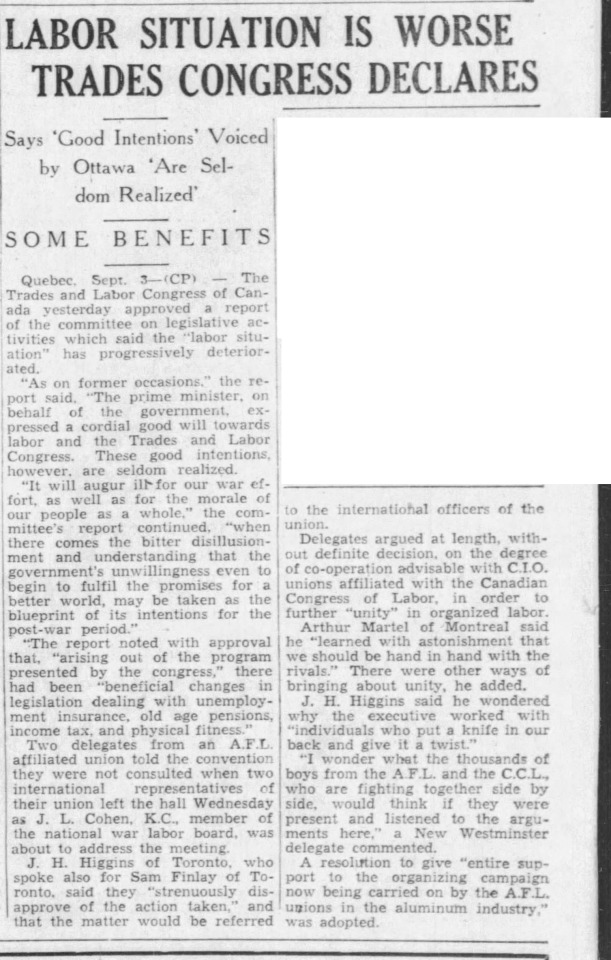
"LABOR SITUATION IS WORSE TRADES CONGRESS DECLARES," Toronto Star. September 3, 1943. Page 3. --- Says 'Good Intentions' Voiced by Ottawa 'Are Seldom Realized --- SOME BENEFITS ---- Quebec, Sept. 3 - (CP) - The Trades and Labor Congress of Canada yesterday approved a report of the committee on legislative activities which said the "labor situation" has progressively deteriorated.
"As on former occasions," the report said, "The prime minister, on behalf of the government, expressed a cordial good will towards labor and the Trades and Labor Congress. These good intentions, however, are seldom realized.
"It will augur ill for our war effort, as well as for the morale of our people as a whole," the committee's report continued, "when there comes the bitter disillusionment and understanding that the government's unwillingness even to begin to fulfill the promises for a better world, may be taken as the blueprint of its intentions for the post-war period."
"The report noted with approval that, "arising out of the program presented by the congress," there had been beneficial changes in legislation dealing with unemployment insurance, old age pensions, income tax, and physical fitness."
Two delegates from an A.F.L. affiliated union told the convention they were not consulted when two international representatives of their union left the hall Wednesday as J. L. Cohen, K.C., member of the national war labor board, was about to address the meeting.
J. H. Higgins of Toronto, spoke also for Sam Finlay of Toronto, said they "strenuously disapprove of the action taken," and that the matter would be referred to the international officers of the union.
Delegates argued at length, without definite decision, on the degree of co-operation advisable with C.I.O. unions affiliated with the Canadian Congress of Labor, in order to further "unity" in organized labor.
Arthur Martel of Montreal said he "learned with astonishment that we should be hand in hand with the rivals." There were other ways of bringing about unity, he added.
J. H. Higgins said he wondered why the executive worked with "individuals who put a knife in our back and give it a twist."
"I wonder what the thousands of boys from the A.F.L. and the C.C.L., who are fighting together side by side, would think if they were present and listened to the arguments here," a New Westminster delegate commented.
A resolution to give "entire support to the organizing campaign now being carried on by the A.FL. unions in the aluminum industry," was adopted.
#ville de québec#trades and labor congress of canada#american federation of labor#canadian labour movement#labour bureaucrats#craft unions#reformist unions#union politics#working class politics#canada during world war 2#quebec city
0 notes
Text
youtube
I cried when they shot Medgar Evers
Tears ran down my spine
And I cried when they shot Mr. Kennedy
As though I'd lost a father of mine
But Malcolm X got what was coming
He got what he asked for this time
So love me, love me, love me, I'm a liberal
Get it?
I go to civil rights rallies
And I put down the old D.A.R.
(D.A.R., that's the Dykes of the American Revolution)
I love Harry and Sidney and Sammy
I hope every colored boy becomes a star
But don't talk about revolution
That's going a little bit too far
So love me, love me, love me, I'm a liberal
I cheered when Humphrey was chosen
My faith in the system restored
I'm glad that the Commies were thrown out
Of the A.F.L. C.I.O. board
And I love Puerto Ricans and Negros
As long as they don't move next door
So love me, love me, love me, I'm a liberal
Ah, the people of old Mississippi
Should all hang their heads in shame
Now, I can't understand how their minds work
What's the matter don't they watch Les Crane?
But if you ask me to bus my children
I hope the cops take down your name
So love me, love me, love me, I'm a liberal
Yes, I read New Republic and Nation
I've learned to take every view
You know, I've memorized Lerner and Golden
I feel like I'm almost a Jew
But when it comes to times like Korea
There's no one more red, white and blue
So love me, love me, love me, I'm a liberal
I vote for the Democratic party
They want the U.N. to be strong
I attend all the Pete Seeger concerts
He sure gets me singing those songs
And I'll send all the money you ask for
But don't ask me to come on along
So love me, love me, love me, I'm a liberal
Sure, once I was young and impulsive
I wore every conceivable pin
Even went to socialist meetings
Learned all the old union hymns
Ah, but I've grown older and wiser
And that's why I'm turning you in
So love me, love me, love me, I'm a liberal
1 note
·
View note
Text
Watch "Love Me, I'm a Liberal" on YouTube
youtube
"Love Me, I'm A Liberal"
I cried when they shot Medgar Evers
Tears ran down my spine
I cried when they shot Mr. Kennedy
As though I'd lost a father of mine
But Malcolm X got what was coming
He got what he asked for this time
So love me, love me, love me, I'm a liberal
I go to civil rights rallies
And I put down the old D.A.R.
I love Harry and Sidney and Sammy
I hope every colored boy becomes a star
But don't talk about revolution
That's going a little bit too far
So love me, love me, love me, I'm a liberal
I cheered when Humphrey was chosen
My faith in the system restored
I'm glad the commies were thrown out
Of the A.F.L. C.I.O. board
I love Puerto Ricans and Negros
As long as they don't move next door
So love me, love me, love me, I'm a liberal
The people of old Mississippi
Should all hang their heads in shame
I can't understand how their minds work
What's the matter don't they watch Les Crain?
But if you ask me to bus my children
I hope the cops take down your name
So love me, love me, love me, I'm a liberal
I read New republic and Nation
I've learned to take every view
You know, I've memorized Lerner and Golden
I feel like I'm almost a Jew
But when it comes to times like Korea
There's no one more red, white and blue
So love me, love me, love me, I'm a liberal
I vote for the democratic party
They want the U.N. to be strong
I go to all the Pete Seeger concerts
He sure gets me singing those songs
I'll send all the money you ask for
But don't ask me to come on along
So love me, love me, love me, I'm a liberal
Once I was young and impulsive
I wore every conceivable pin
Even went to the socialist meetings
Learned all the old union hymns
But I've grown older and wiser
And that's why I'm turning you in
So love me, love me, love me, I'm a liberal
1 note
·
View note
Text

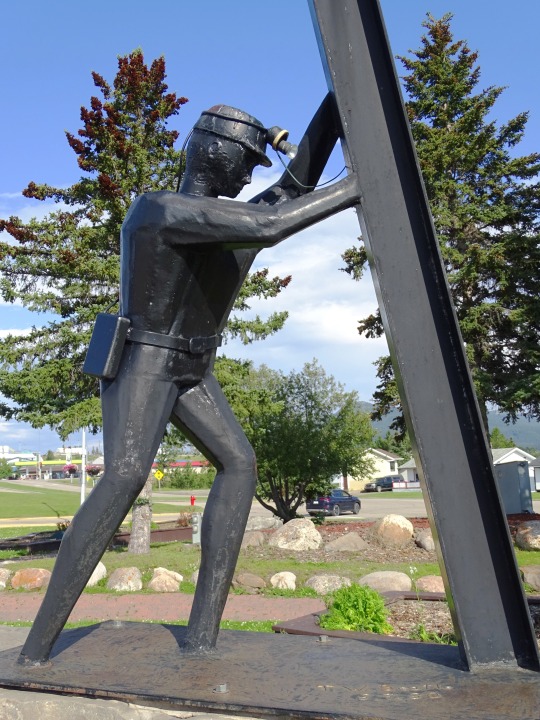


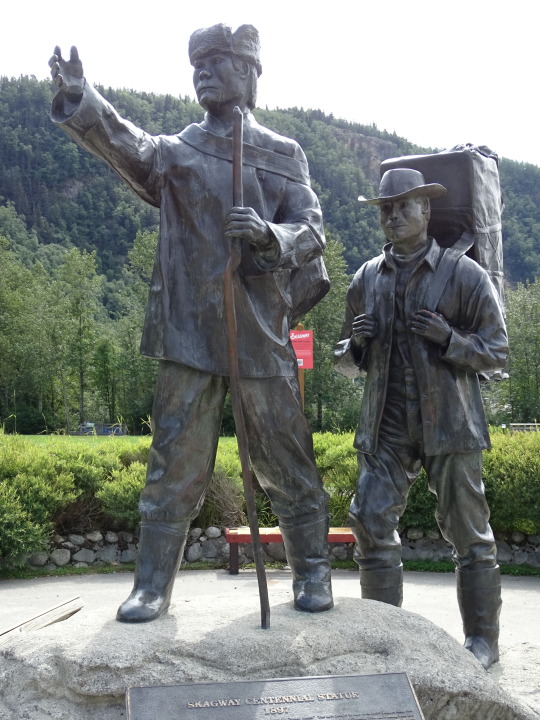


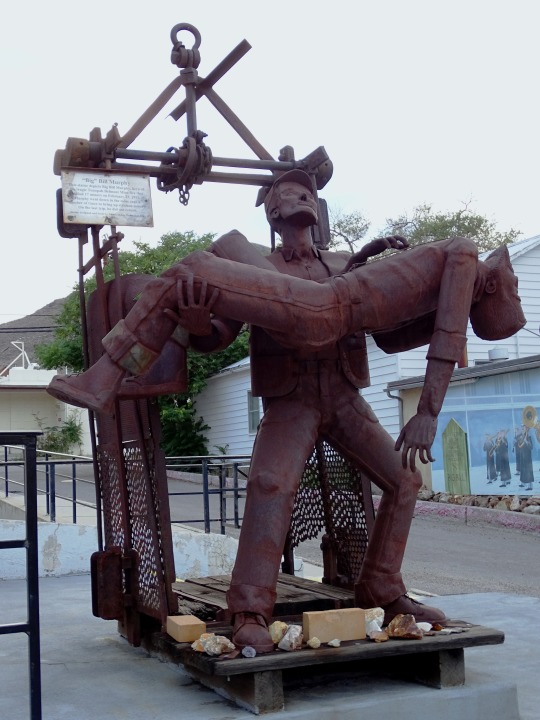

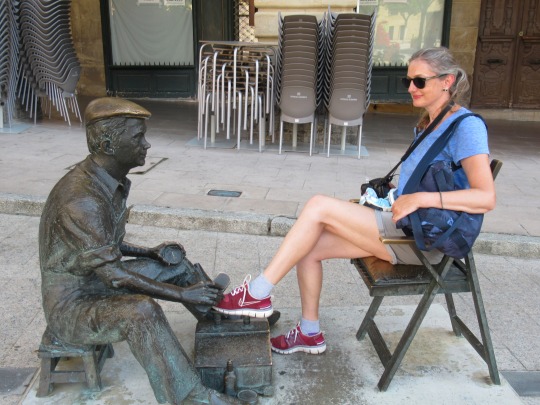
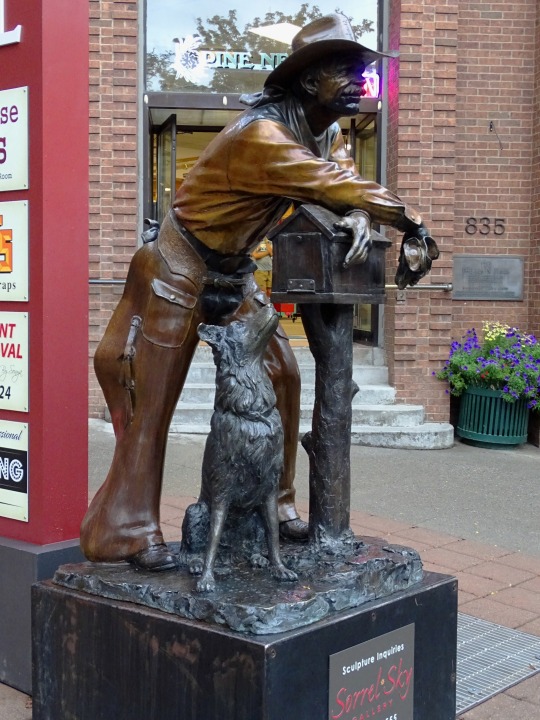

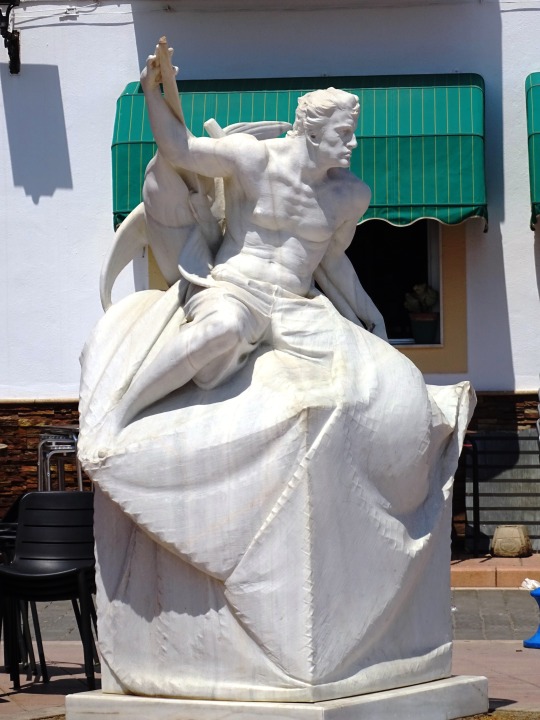




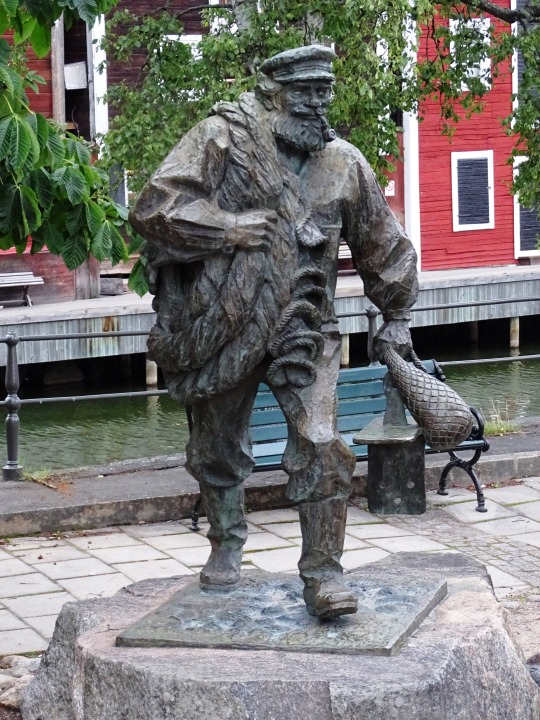


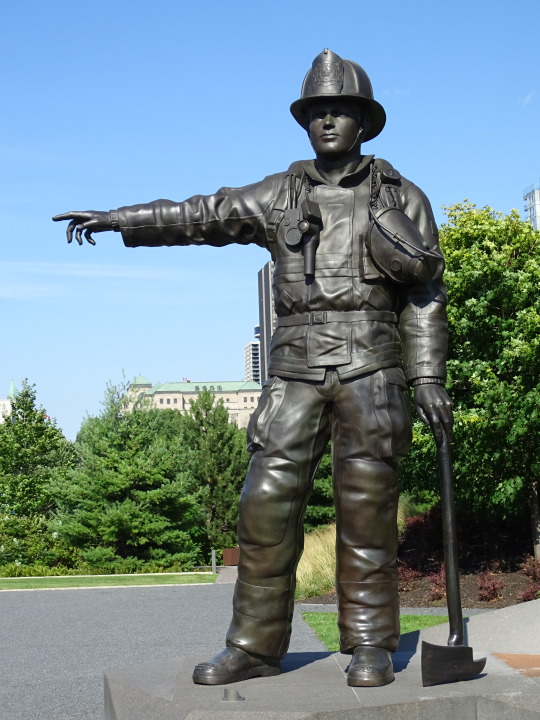



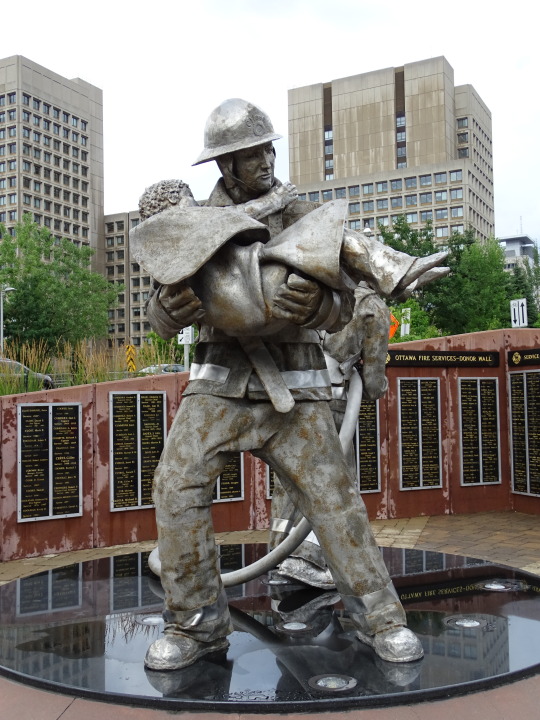

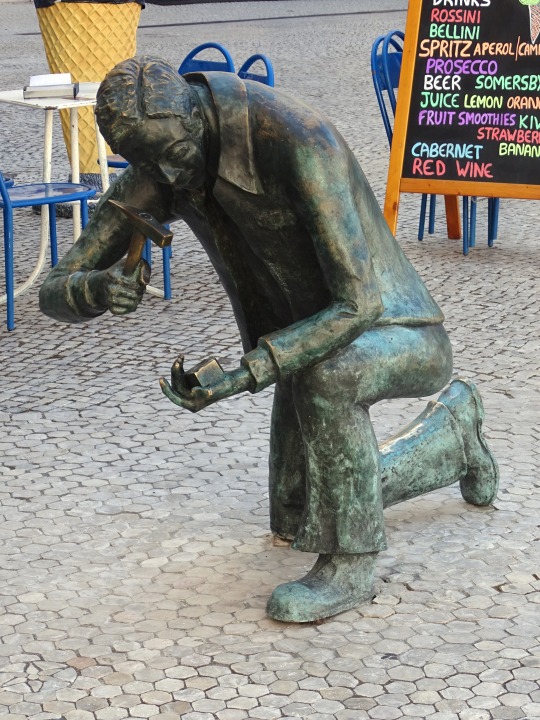
International Workers Memorial Day
Workers’ Memorial Day is an international holiday marked on April 28 annually. It is observed to raise awareness of the importance of workplace safety, as well as commemorate all the workers who have lost their lives due to work-related illnesses and those whose lives have been put on hold due to injuries that have incurred while working. According to figures, the number of people who get killed at work is higher than those who lose their lives to wars and drug abuse combined! Labor unions around the world observe this day to remember their fallen heroes and discuss measures to ensure safe workplaces.
History of Workers Memorial Day
Although it only became widely popular when the U.S. first celebrated it on April 28, 1989, Workers’ Memorial Day had been celebrated several years before then by Canada on the same day. Perhaps, the unpopularity associated with Canada’s first observation can be credited to the fact that it was celebrated under a different, albeit similar name. Regardless of who first observed it though, the day was inspired by the signing of the Occupational Safety and Health Act into law in 1970 and the formation of the OSHA on April 28, 1971.
In the early years of the signing of the OSHA into law, the celebration of the Workers’ Memorial Day was centered in North America. The holiday only attained international recognition in the last parts of the 20th and the beginning of the 21st centuries. In 1985, the Canadian Labor Congress pronounced April 28 as an annual day of remembrance — which is the anniversary of a Workers’ Compensation Act signed as far back as 1914. Progressively, the American Federation of Labor and Congress of Industrial Organization (A.F.L.-C.I.O.) declared April 28 as Workers’ Memorial Day to honor the thousands of people who have been injured or lost their lives on their jobs. The U.K. followed suit with their celebration in 1992.
Since the adoption of the holiday by the International Labor Organization (I.L.O.) in 2001, many countries are now actively participating in observing it, with some deeming it fit to confer the holiday a public holiday status. Furthermore, to add value to the holiday, from 1996, annual themes began to be assigned to each year’s celebration of the day.
Workers Memorial Day timeline
1971 OSHA is Formed
The Occupational Safety and Health Administration (OSHA) is formed.
1989 A.F.L.-C.I.O. Declaration
The American Federation of Labor and Congress of Industrial Organizations declares April 28 as Workers' Memorial Day.
1992 Introduced in the U.K.
Tommy Harte introduces Workers' Memorial Day in the U.K.
1996 Themes Begin to Be Set
The I.C.F.T.U. begins to set annual themes for each Workers' Memorial Day.
2001 New Declaration
An agency of the United Nations — I.L.O. — recognizes Workers' Memorial Day and declares it World Day for Safety and Health at Work.
Workers Memorial Day FAQs
What does a labor union do?
Among many other things, labor unions are charged with fighting for the betterment of their workers’ welfare, remunerations, and all things needed for them to work in a favorable environment and for decent financial gratification. Generally, labor unions serve as mediators between their members and authorities. Their impacts have been felt by both employees and employers over the years.
Is a labor union a good thing?
It is. This is evident in the many advantages and privileges unionized workers get over their non-unionized counterparts. Most significant changes in employees’ welfare and safety were achieved through the struggles of labor unions. They do have their setbacks though.
Why do people not like unions?
Most governments and employers detest labor unions because of their strong affection for riots and strike actions. To the unions, those two are the most effective languages employers understand, and many a time, they do succeed in pressing home their demands with the employers.
How to Observe Workers Memorial Day
Inform the public about work safety
Strive for a safer environment at work
Honor the memories of fallen workers
Go out there and educate the public on the importance of staying safe while at work. Also, tell them the possible risks associated with their various works.
If you are working in an unsafe or potentially dangerous environment, get people to rally behind you and ask for a safer work environment from your employers. You might just be a cause for a good change.
Be it a close relative, friend, acquaintance, or stranger, honor the memories of those fallen heroes, who died in the cause of their works. Pay tributes to them or their loved ones.
5 Interesting Facts About Workers’ Memorial Day
It was first celebrated in Canada
It was unpopular at first
America made it popular
It became international
It's a public holiday in Gibraltar
Canada was the first country to mark it although under a different but similar name.
The event was first known but not quite as popular as it became in the later years.
It only began to be widely recognized when the U.S. marked it.
A host of country trade unions in Europe, Asia, Africa, Australia, and elsewhere observe it.
While it is simply a national holiday in other countries, it is a government-free public holiday in Gibraltar.
Why Workers Memorial Day is Important
It reminds us of successful struggles
It increases the unity between workers worldwide
It gives workers a more amplified voice
Workers' Memorial Day reminds us of how effective calling out to authorities for good changes can be. By doing so, we may be able to save someone's life.
Whichever continent you happen to be from and whichever race you belong to, this day increases the bond and unity between workers in achieving a common goal. We love this!
Workers around the world use the day to loudly voice out their work environment and other pressing demands. Considerate employers, on the other hand, listen to the demands.
Source
#Firefighter by Susan Velder#Miners Memorial by T.W. Seatle#Prospector and his dog by Chuck Buchanan#The Logger by Joerg Jung#Skagway Centennial Statue by Chuck Buchanan#Stampeder Statue by Peter Lucchetti#28 April#USA#Canada#International Workers Memorial Day#WorkersMemorialDay#original photography#travel#vacation#cityscape#tourist attraction#Whitehorse#Skagway#Chicos and Capulin by David Montgomery#Bad Decision by Vic Payne#Big Bill Murphy by Adam Skiles#Waiting on an Answer by George Lundeen#Anonymity of Prevention by Derek Lo and Lana Winkler#Standing Together by John Greer#Monument to the Calceteiro by Sérgio Stichini#Gruvabetaren by Helge Zandén#Strömmingsfiskaren by Per Nilsson-Öst
0 notes
Link
Ben Brucato, a sociologist at Rhode Island College, argues that police unions are crucially different from other labor unions. “These organizations function as lobbies to both resist accountability legislation and shield implicated officers,” he writes. A public-sector union is distinct from its private-sector counterparts; its negotiations necessarily include, at least morally, a third party—the public, the taxpayer. And yet many police unions, in their contracts and their ideology, seem to make no provision for this invisible third party. They defend their members against the public, and punish whistle-blowers with even greater zeal than management does. Police unions “represent hundreds of thousands of people, and, except in a very few states, have the ability to organize without any opposition from government,” Brucato told me.
Brucato believes that the solution is to abolish police unions. He has a list of ten steps toward that end, including cancelling contracts, mass firings in the event of illegal slowdowns, and federal prosecutions for persistent obstruction of justice. Other abolitionists want to see major labor federations, such as the A.F.L.-C.I.O., sever ties with police unions. Sachs agrees that there is an urgent need for reform, but he suggests considering more procedural steps: limiting collective bargaining to non-disciplinary matters; opening bargaining sessions to the public; encouraging departments to have multiple unions, representing more diverse views. Many analysts emphasize the need for new use-of-force protocols that are known to save lives but that the unions reject.
2 notes
·
View notes
Text
Elizabeth Warren Is Completely Serious https://nyti.ms/2KlW3oV
PLEASE READ and SHARE this FASCINATING, IN-DEPTH expose on Elizabeth Warren's life, her DEEPLY HELD BELIEFS and excellent POLICY prescriptions to ADDRESS INCOME INEQUALITY, CORPORATE POWER and CORRUPTION in policies. She is an AMAZINGLY INTELLIGENT strong woman.
#2020PresidentalCandidates
#2020Vision #VoteBlue2020 #2020PresidentialElection
Elizabeth Warren Is Completely Serious
About income inequality. About corporate power. About corrupt politics. And about being America’s next president.
By Emily Bazelon | Published June 17, 2019 | New York Times | Posted June 17, 2019 |
The first time I met Elizabeth Warren, she had just come home from a walk with her husband and her dog at Fresh Pond, the reservoir near her house in Cambridge, Mass. It was a sunny day in February, a couple of weeks after Warren announced her candidacy for president, and she was wearing a navy North Face jacket and black sneakers with, as usual, rimless glasses and small gold earrings. Her hair had drifted a bit out of place.
The dog, Bailey, is a golden retriever who had already been deployed by her presidential campaign in a tweet a week earlier, a pink-tongued snapshot with the caption “Bailey will be your Valentine.” Warren started toweling off his paws and fur, which were coated in mud and ice from the reservoir, when she seemed to realize that it made more sense to hand this task over to her husband, Bruce Mann.
In the kitchen, Warren opened a cupboard to reveal an array of boxes and canisters of tea. She drinks many cups a day (her favorite morning blend is English breakfast). Pouring us each a mug, she said, “This is a fantasy.” She was talking about the enormous platform she has, now that she’s running for president, to propagate policy proposals that she has been thinking about for decades. “It’s this moment of being able to talk about these ideas, and everybody says, ‘Oh, wait, I better pay attention to this.’” She went on: “It’s not about me; it’s about those ideas. We’ve moved the Overton window” — the range of ideas deemed to merit serious consideration — “on how we think about taxes. And I think, I think we’re about to move it on child care.”
Her plan, announced in January, would raise $2.75 trillion in revenue over 10 years through a 2 percent tax on assets over $50 million and a higher rate for billionaires. Warren wants to use some of that money to pay for universal child care on a sliding scale. As she talked, she shifted around in her chair — her hands, her arms, her whole body leaning forward and moving back. Onstage, including at TV town halls, she prefers to stand and pace rather than sit (she tries to record six miles a day on her Fitbit), and sometimes she comes across as a little frenetic, like a darting bird. One on one, though, she seemed relaxed, intent.
Warren moved to Cambridge in 1995 when she took a tenured job at Harvard Law School, and 11 years later, Mann, who is a legal historian, got a job there, too. By then they had bought their house; Warren’s two children from a previous marriage, her daughter, Amelia, and son, Alexander, were already grown. The first floor is impeccable, with a formal living room — elegant decorative boxes arranged on a handsome coffee table — a cozy sunroom and a gleaming kitchen with green tile countertops. When Warren taught classes at Harvard, she would invite her students over for barbecue and peach cobbler during the semester. Some of them marveled at the polish and order, which tends not to be the norm in faculty homes. Warren says she scoops up dog toys before people come over.
For her entire career, Warren’s singular focus has been the growing fragility of America’s middle class. She made the unusual choice as a law professor to concentrate relentlessly on data, and the data that alarms her shows corporate profits creeping up over the last 40 years while employees’ share of the pie shrinks. This shift occurred, Warren argues, because in the 1980s, politicians began reworking the rules for the market to the specifications of corporations that effectively owned the politicians. In Warren’s view of history, “The constant tension in a democracy is that those with money will try to capture the government to turn it to their own purposes.” Over the last four decades, people with money have been winning, in a million ways, many cleverly hidden from view. That’s why economists have estimated that the wealthiest top 0.1 percent of Americans now own nearly as much as the bottom 90 percent.
As a presidential candidate, Warren has rolled out proposal after proposal to rewrite the rules again, this time on behalf of a majority of American families. On the trail, she says “I have a plan for that” so often that it has turned into a T-shirt slogan. Warren has plans (about 20 so far, detailed and multipart) for making housing and child care affordable, forgiving college-loan debt, tackling the opioid crisis, protecting public lands, manufacturing green products, cracking down on lobbying in Washington and giving workers a voice in selecting corporate board members. Her grand overarching ambition is to end America’s second Gilded Age.
[Elizabeth Warren has lots of plans.Together, they would remake the economy.]
“Ask me who my favorite president is,” Warren said. When I paused, she said, “Teddy Roosevelt.” Warren admires Roosevelt for his efforts to break up the giant corporations of his day — Standard Oil and railroad holding companies — in the name of increasing competition. She thinks that today that model would increase hiring and productivity. Warren, who has called herself “a capitalist to my bones,” appreciated Roosevelt’s argument that trustbusting was helpful, not hostile, to the functioning of the market and the government. She brought up his warning that monopolies can use their wealth and power to strangle democracy. “If you go back and read his stuff, it’s not only about the economic dominance; it’s the political influence,” she said.
What’s crucial, Roosevelt believed, is to make the market serve “the public good.” Warren puts it like this: “It’s structural change that interests me. And when I say structural, the point is to say if you get the structures right, then the markets start to work to produce value across the board, not just sucking it all up to the top.”
But will people respond? Warren has been a politician for only seven years, since she announced her run for the Senate in 2011 at age 62. She’s still thinking through how she communicates her ideas with voters. “The only thing that worries me is I won’t describe it in a way that — ” she trailed off. “It’s like teaching class. ‘Is everybody in here getting this?’ And that’s what I just struggle with all the time. How do I get better at this? How do I do more of this in a way that lets people see it, hear it and say, ‘Oh, yeah.’”
In the months after Donald Trump’s stunning victory in 2016, Warren staked out territory as a fierce opponent of the president’s who saw larger forces at play in her party’s defeat. While many Democratic leaders focused on Trump himself as the problem, Warren gave a series of look-in-the-mirror speeches. In the first, to the executive council of the A.F.L.-C.I.O. on Nov. 10, she said that although there could be “no compromise” on standing up to Trump’s bigotry, millions of Americans had voted for him “despite the hate” — out of their deep frustration with “an economy and a government that doesn’t work for them.” Later that month, she gave a second speech behind closed doors to a group that included wealthy liberal donors and went hard at her fellow Democrats for bailing out banks rather than homeowners after the 2008 financial crisis. In another speech, in February 2017, to her ideological allies in the Congressional Progressive Caucus, Warren said: “No matter how extreme Republicans in Washington became, Democrats might grumble or whine, but when it came time for action, our party hesitated and pushed back only with great reluctance. Far too often, Democrats have been unwilling to get out there and fight.”
Warren fought in those early months by showing up at the Women’s March and at Logan Airport in Boston to protest Trump’s travel ban. On the Senate floor, opposing the nomination of Jeff Sessions to be Trump’s first attorney general, she read a letter by Coretta Scott King criticizing Sessions for his record of suppressing the black vote in Alabama, and Republican leaders rebuked her and ordered her to stop. The moment became a symbol of the resistance, with the feminist meme “Nevertheless, She Persisted,” a quote from the majority leader, Mitch McConnell, defending the move to silence her. Warren helped take down Trump’s first choice for labor secretary, the fast-food magnate Andy Puzder (he called his own employees the “bottom of the pool”), and she called for an investigation of the Trump administration’s botched recovery efforts in Puerto Rico after Hurricane Maria.
But somewhere along the way to announcing her candidacy, Warren’s influence faded. She was no longer the kingmaker or queenmaker whose endorsement Hillary Clinton and Bernie Sanders avidly sought during their 2016 primary battle. When Warren failed to endorse Sanders, the left saw her decision as an act of betrayal, accusing her of propping up the Democratic establishment instead of trying to take it down. (When I asked Warren if she had regrets, she said she wasn’t going to revisit 2016.) Sanders emerged as the standard-bearer of the emboldened progressive movement.
Trump, meanwhile, was going after Warren by using the slur “Pocahontas” to deride her self-identification in the 1980s and ’90s as part Native American. In the summer of 2018, he said that if she agreed to take a DNA test in the middle of a televised debate, he would donate $1 million to her favorite charity. Warren shot back on Twitter by condemning Trump’s practice of separating immigrant children from their parents at the border (“While you obsess over my genes, your Admin is conducting DNA tests on little kids because you ripped them from their mamas”). But a few months later, she released a videosaying she had done the DNA analysis, and it showed that she had distant Native American ancestry. The announcement backfired, prompting gleeful mockery from Trump (“I have more Indian blood than she has!”) and sharp criticism from the Cherokee Nation, who faulted her for confusing the issue of tribal membership with blood lines. Warren apologized, but she seemed weaker for having taken Trump’s bait.
Sanders is still the Democratic candidate with a guru’s following and a magic touch for small-donor fund-raising, the one who can inspire some 4,500 house parties in a single weekend. And he has used his big policy idea, Medicare for All, to great effect, setting the terms of debate on the future of health care in his party.
With four more years of Trump on the line, though, it’s Joe Biden — the party’s most known quantity — who is far out in front in the polls. Challenging Biden from the left, Warren and Sanders are not calling wealthy donors or participating in big-money fund-raisers. Sanders has been leading Warren in the polls, but his support remains flat, while her numbers have been rising, even besting his in a few polls in mid-June. Warren and Sanders are old friends, which makes it awkward when her gain is assumed to be his loss. Early in June, an unnamed Sanders adviser ridiculed Warren’s electability by calling her DNA announcement a “debacle” that “killed her,” according to U.S. News & World Report. A couple of weeks before the first Democratic primary debates, on June 26 and 27, I asked her what it was like to run against a friend. “You know, I don’t think of this as competing,” she responded. It was the least plausible thing she said to me.
In March, Warren demonstrated her appetite for challenging the economic and political dominance of corporate titans by going directly at America’s biggest tech companies. In a speech in Long Island City, Queens — where local protesters demanded that Amazon drop its plan to build a big new campus — Warren connected the companies’ success at smothering start-up rivals to their influence in Washington. She remarked dryly that the large amounts that businesses like Facebook, Google, Amazon and Apple spend on lobbying is a “good return on investment if they can keep Washington from enforcing the antitrust laws.” She wants to use those laws to break up the companies instead — a move that no other major American politician had proposed.
After Warren started talking about the four tech giants, along with other critics, the Trump administration let it be known that it was scrutinizing them for potential antitrust violations. Conservatives have suspected social media platforms of bias against them for years, and with concerns about privacy violations escalating, big tech was suddenly a bipartisan target. Warren has specifics about how to reduce their influence; she wants to undo the mergers that allowed Facebook, for example, to snap up WhatsApp, rather than compete with it for users. Warren could unleash the power to bring major antitrust prosecutions without Congress — an answer to gridlock in Washington that’s crucially woven into some of her other plans too. (Warren also favors ending the filibuster in the Senate.) Warren wants to prevent companies that offer an online marketplace and have annual revenue of $25 billion or more from owning other companies that sell products on that platform. In other words, Amazon could no longer sell shoes and diapers and promote them over everyone else’s shoes and diapers — giving a small business a fair chance to break in.
“There’s a concerted effort to equate Warren with Bernie, to make her seem more radical,” says Luigi Zingales, a University of Chicago economist and co-host of the podcast Capitalisn’t. But Wall Street and its allies “are more afraid of her than Bernie,” Zingales continued, “because when she says she’ll change the rules, she’s the one who knows how to do it.”
Warren’s theory of American capitalism rests on two turning points in the 20th century. The first came in the wake of the Great Depression, when President Franklin D. Roosevelt seized the chance to protect workers and consumers from future economic collapse. While the New Deal is mostly remembered for creating much of the nation’s social safety net, Warren also emphasizes the significance of the legislation (like the Glass-Steagall Act) that Democrats passed to rein in bankers and lenders and the agencies (the Securities and Exchange Commission and the Federal Deposit Insurance Corporation) that they put in place to enforce those limits. Warren credits this new regulatory regime, along with labor unions, with producing a golden era for many workers over the next four and a half decades. Income rose along with union membership, and 70 percent of the increase went to the bottom 90 percent. That shared prosperity built, in Warren’s telling, “the greatest middle class the world had ever known.”
Then came Warren’s second turning point: President Ronald Reagan’s assault on government. Warren argues that Reagan’s skill in the 1980s at selling the country on deregulation allowed the safeguards erected in the 1930s to erode. Republicans seized on the opening Reagan created, and Democrats at times aided them. (Bill Clinton signed the repeal of Glass-Steagall in 1999.) That’s how the country arrived at its current stark level of inequality. “The system is as rigged as we think,” Warren wrote in her 2017 book “This Fight Is Our Fight”— in a riposte to Barack Obama, who insisted it was not, even as he recognized the influence of money in politics. This, Warren believes, is what Trump, who also blasted a rigged system, got right and what the Democratic establishment — Obama, both Clintons, Biden — gets wrong.
The challenge for Warren, going up against Trump, is that his slogan “drain the swamp” furthers the longstanding Republican goal of discrediting government, whereas Warren criticizes government as “a tool for the wealthy and well connected,” while asking voters to believe that she can remake it to help solve their problems. Hers is the trickier, paradoxical sell.
Warren faces a similar challenge when she tries to address the fear some white voters have that their economic and social status is in decline. Trump directs his supporters to blame the people they see every day on TV if they’re watching Fox News: immigrants and condescending liberal elites. Warren takes aim at corporate executives while pressing for class solidarity among workers across race and immigration status. Trump’s brand of right-wing populism is on the rise around the world. As more people from the global south move north, it’s harder than ever to make the case to all workers that they should unite.
It’s a classic problem for liberals like Warren: Workers often turn on other workers rather than their bosses and the shadowy forces behind them. “Populism is such a slippery concept,” Michael Kazin, a historian at Georgetown University and author of “The Populist Persuasion: An American History,” told me. “The only real test is whether you can be the person who convinces people you understand their resentment against the elites. Trump did enough of that to win. Bernie Sanders has shown he can do it among young people. Can Elizabeth Warren pull it off? I’m not sure.”
It’s an inconvenient political fact for Warren that she’s far more associated with Harvard and Massachusetts, where she has lived for the last 25 years, than with Oklahoma, the childhood home that shaped her and where her three brothers still live and her family’s roots are multigenerational. If you include Texas, where Warren lived in her early 20s and for most of her 30s, she spent three formative decades far from the Northeast.
When she was growing up, Warren’s father worked as a salesman at Montgomery Ward and later as a janitor; neither of her parents went to college. (White women in this group broke for Trump by 61 percent in 2016, and white men supported him by 71 percent.) In the early 1960s, when Warren was 12, her father had a heart attack and lost his job in Oklahoma City. One day, after the family’s station wagon was repossessed, her mother put on the one formal dress she owned, walked to an interview at Sears and got a job answering phones for minimum wage. This has become the story that Warren tells in every stump speech. She uses it to identify with people who feel squeezed.
There’s another story that Warren tells in her book about the implications, for her own life, of her family’s brush with financial ruin. Warren was going to George Washington University on a scholarship — “I loved college,” she told me. “I was having a great time” — when an old high school boyfriend, Jim Warren, reappeared in her life.
He asked her to marry him and go to Texas, where he had a job at IBM. Warren knew her mother wanted her to say yes. “It was the whole future, come on,” she told me. “I had lived in a family for years that was behind on the mortgage. And a secure future was a good man — not what you might be able to do on your own.”
Warren dropped out of college to move to Houston with her new husband. “It was either-or,” she said. Many women who make this choice never go back to school. But Warren was determined to become a teacher, so she persuaded Jim to let her finish college as a commuter student at the University of Houston for $50 a semester. After her graduation, they moved to New Jersey for Jim’s next IBM posting, and she started working as a speech therapist for special-needs children.
Warren was laid off when she became pregnant, and after her daughter was born, she talked Jim into letting her go to law school at Rutgers University in Newark (this time the cost was $450 a semester). After she had her son, she came to terms with the fact that she wasn’t cut out to stay home. “I wanted to be good at it, but I just wasn’t,” she told me.
In the late 1970s, she got a job at the University of Houston law school. She and her husband moved back to Texas. A couple of years later, when their daughter was in elementary school and their son was a toddler, the Warrens divorced. In her book, Warren writes about this from Jim’s perspective: “He had married a 19-year-old girl, and she hadn’t grown into the woman we both expected.” (Jim Warren died in 2003.)
Two years later, Warren asked Mann, whom she had met at a conference, to marry her. He gave up his job at the University of Connecticut to join her in Houston. At the university, Warren decided to teach practical classes, finance and business. In 1981, she added a bankruptcy class and discovered a question that she wanted to answer empirically: Why were personal bankruptcy rates rising even when the economy was on the upswing?
At first, Warren accepted the assumption that people were causing their own financial ruin. Too much “Tommy, Ralph, Gucci and Prada,” a story in Newsweek called “Maxed Out”later declared. Along with two other scholars, Jay Westbrook and Teresa Sullivan, Warren flew around the country and collected thousands of bankruptcy-court filings in several states. “I was going to expose these people who were taking advantage of the rest of us by hauling off to bankruptcy and just charging debts that they really could repay,” she said in a 2007 interview with Harry Kreisler, a historian at the University of California, Berkeley. But Warren, Westbrook and Sullivan found that 90 percent of consumer bankruptcies were due to a job loss, a medical problem or the breakup of a family through divorce or the death of a spouse. “I did the research, and the data just took me to a totally different place,” Warren said.
That research led to a job at the University of Texas at Austin, despite the doubts some faculty members had about her nonselective university degrees. (Mann worked at Washington University in St. Louis.) They finally managed to get joint appointments at the University of Pennsylvania in 1987, and she stayed there until 1995.
During this period, Warren was registered as a Republican. (Earlier, in Texas, she was an independent.) Her political affiliation shifted around the time she began working on bankruptcy in Washington. More than one million families a year were going bankrupt in the mid-’90s, and Congress established the National Bankruptcy Review Commission to suggest how to change the bankruptcy code. The commission’s chairman, former Representative Mike Synar of Oklahoma, asked Warren, now at Harvard Law School, to be his chief policy adviser. “I said, ‘No, not a chance, that’s political,’” Warren said in her interview with Kreisler. “I want to be pure. I want to be pristine. I don’t want to muddy what I do with political implications.”
But Synar persuaded Warren to join his team. It was a critical juncture. Big banks and credit-card companies were pushing Congress to raise the barriers for consumers to file for bankruptcy and harder for families to write off debt. Bill Clinton was president. He had run — much as Warren is running now — as a champion of the middle class, but early in his first term he began courting Wall Street. He didn’t want to fight the banks.
Warren flew back and forth from Boston to Washington and to cities where the commission held hearings. It was her political education, and the imbalance of influence she saw disturbed her. The banks and lenders paid people to go to the hearings, wrote campaign checks and employed an army of lobbyists. People who went bankrupt often didn’t want to draw attention to themselves, and by definition, they had no money to fight back.
By 1997, Warren had become a Democrat, but she was battling within the party as well as outside it. In particular, she clashed with Joe Biden, then a senator from Delaware. Biden’s tiny state, which allowed credit-card companies to charge any interest rate they chose beginning in 1981, would become home to half the national market. One giant lender, MBNA, contributed more than $200,000 to Biden’s campaigns over the years, according to the Center for Responsive Politics. Biden strongly supported a bill, a version of which was first introduced in 1998, to make it more expensive to file for bankruptcy and more difficult to leave behind debt. He was unpersuaded by Warren’s charts and graphs showing how the change would increase the financial burden on families. “I am so sick of this self-righteous sheen put on anybody who wants to tighten up bankruptcy,” Biden said during a Senate hearing in 2001.
The bankruptcy battles continued, and when Warren testified against the proposed changes to the bankruptcy code before the Senate in 2005, Biden called her argument “very compelling and mildly demagogic,” suggesting that her problem was really with the high interest rates that credit-card companies were allowed to charge. “But senator,” Warren answered, “if you are not going to fix that problem” — by capping interest rates — “you can’t take away the last shred of protection from these families” that access to bankruptcy offers. The bill passed two months later.
Biden’s team now argues that he stepped in to win “important concessions for middle-class families,” like prioritizing payments for child support and alimony ahead of other debt. When I asked Warren in June about Biden’s claim, she pursed her lips, looked out the window, paused for a long beat and said, “You may want to check the record on that.” The record shows that Warren’s focus throughout was on the plight of families who were going bankrupt and that Biden’s was on getting a bill through. He supported tweaking it to make it a little less harmful to those facing bankruptcy, and the changes allowed it to pass.
In the years since it became law, the bankruptcy bill has allowed credit-card companies to recover more money from families than they did before. That shift had two effects, Matthew Yglesias argued recently in Vox. As Biden hoped, borrowers over all benefited when the credit-card companies offered slightly lowered interest rates. But as Warren feared, the new law hit people reeling from medical emergencies and other unexpected setbacks. Blocked from filing for bankruptcy, they have remained worse off for years. And a major effort to narrow the path to bankruptcy may have an unintended effect, according to a 2019 working paper released by the National Bureau of Economic Research, by making it harder for the country to recover from a financial crisis.
In 2001, a Harvard student named Jessica Pishko, an editor of The Harvard Women’s Law Journal, approached Warren about contributing to a special issue. She didn’t expect Warren to say yes. Students saw Warren as an example of female achievement but not as a professional feminist. “She didn’t write about anything that could seem girlie,” Pishko remembers. “She wasn’t your go-to for feminist issues, and she was from that era when you didn’t put pictures of your kids on your desk” to show that you were serious about your work. But Warren wanted to contribute. “She said: ‘I’m doing all this research on bankruptcy, and I want to talk about why that’s a women’s issue. Can I do that?’”
The paper Warren produced, “What Is a Women’s Issue?” was aggressive and heterodox. In it, she criticized the NOW Legal Defense and Education Fund for singling out Biden for praise in its annual report because he championed the Violence Against Women Act, which made it easier to prosecute domestic abusers. Warren thought his support for that law did not compensate for his role in pushing through the bankruptcy legislation, which she believed hurt women far more. “Why isn’t Senator Biden in trouble with grass-roots women’s groups all over the country and with the millions of women whose lives will be directly affected by the legislation he sponsors?” she asked. The answer raised “a troubling specter of women exercising powerful political influence within a limited scope, such as rape laws or equal educational opportunity statutes.
Warren wanted feminism to be wider in scope and centered on economic injustice. She urged students to take business-law classes. “If few students interested in women’s issues train themselves in commercial areas, the effects of the commercial laws will not be diminished, but there will be few effective advocates around to influence those policy outcomes,” she wrote. “If women are to achieve true economic equality, a far more inclusive definition of a women’s issue must emerge.”
She challenged standard feminist thinking again when she published her first book for a lay audience (written with her daughter), “The Two-Income Trap,” in 2003. Warren argued that in the wake of the women’s movement of the 1970s, millions of mothers streamed into the workplace without increasing the financial security of their families. Her main point was that a family’s additional income, when a second parent went to work, was eaten up by the cost of housing, and by child care, education and health insurance.
Conservatives embraced her critique more enthusiastically than liberals. Warren even opposed universal day care for fear of “increasing the pressure” to send both parents to work. She has shifted on that point. The child-care proposal she announced this February puts funds into creating high-quality child care but doesn’t offer equivalent subsidies to parents who stay home with their children. Warren says she’s responding to the biggest needs she now sees. More and more families are squeezed by the cost of child care; not enough of it is high quality; the pay for providers is too low. Warren is framing child care as a collective good, like public schools or roads and bridges.
“The Two-Income Trap” got Warren onto “Dr. Phil,” giving her a taste of minor stardom and the appeal of a larger platform. When the financial crisis hit, she moved to Washington’s main stage. At the invitation of Harry Reid, the Senate majority leader at the time, Warren led the congressional oversight panel tasked with overseeing the $700 billion Troubled Asset Relief Program that Congress created to save the financial system. In public hearings, Warren called out Timothy Geithner, Obama’s Treasury secretary, for focusing on bailing out banks rather than small businesses and homeowners. Through a spokeswoman, Geithner declined to comment for this article. In his memoir, he called the oversight hearings “more like made-for-YouTube inquisitions than serious inquiries.”
But Warren could see the value of the viral video clip. In 2009, Jon Stewart invited her on “The Daily Show.” After throwing up from nerves backstage, she went on air and got a little lost in the weeds — repeating the abbreviation P.P.I.P. (the Public-Private Investment Program) and at first forgetting what it stood for. She felt as though she blew her opportunity to speak to millions of viewers. Stewart brought her back after the break for five more minutes, and she performed well, clearly explaining how the country forgot the lessons of the Great Depression and the dangers of deregulation. “We start pulling the threads out of the regulatory fabric,” Warren said. She listed the upheavals that followed — the savings and loan crisis of the 1980s and 1990s, the collapse of the giant hedge fund Long-Term Capital Management in 1998 and the Enron scandal a few years later. “And what is our repeated response?” Warren said. “We just keep pulling the threads.” Now that the government was trying to save the whole economy from falling off the cliff, there were two choices: “We’re going to decide, basically: Hey, we don’t need regulation. You know, it’s fine, boom and bust, boom and bust, boom and bust, and good luck with your 401(k). Or alternatively, we’re going to say, You know, we’re going to put in some smart regulations ... and what we’re going to have, going forward, is we’re going to have stability and some real prosperity for ordinary folks.”
Stewart leaned forward and told Warren she had made him feel better than he had in months. “I don’t know what it is that you just did right there, but for a second that was like financial chicken soup for me,” he said.
“That moment changed my life,” Warren later said. Stewart kept inviting her back. In 2010, Congress overhauled and tightened financial regulation with the Dodd-Frank Act. In the push for its passage, Warren found that she had the leverage to persuade Democratic leaders to create a new agency, the Consumer Financial Protection Bureau. Its job is to safeguard people from malfunctioning financial products (like predatory loans), much as the government protects them from — to borrow Warren’s favorite analogy — toasters that burst into flames. Warren spent a year setting up the C.F.P.B. When Obama chose Richard Cordray over her as the first director because he had an easier path to Senate confirmation, progressives were furious.
Warren was an unusual political phenomenon by then: a policy wonk who was also a force and a symbol. In 2012, she was the natural choice for Democrats recruiting a candidate to run against Senator Scott Brown of Massachusetts, a Republican who had slipped into office, after Ted Kennedy’s death, against a weak opponent. Warren had another viral moment when a supporter released a homemade video of her speaking to a group in Andover. “You built a factory out there?” Warren said, defending raising taxes on the wealthy. “Good for you. But I want to be clear: You moved your goods to market on the roads the rest of us paid for; you hired workers the rest of us paid to educate; you were safe in your factory because of police forces and fire forces that the rest of us paid for. You didn’t have to worry that marauding bands would come and seize everything at your factory, and hire someone to protect against this, because of the work the rest of us did.” Brown called Warren “anti-free enterprise,” and Obama, running for re-election, distanced himself in an ad shot from the White House (“Of course Americans build their own businesses,” he said). But Warren’s pitch succeeded. She came from behind in the race against Brown and won with nearly 54 percent of the vote.
Voters of color could determine the results of the 2020 presidential election. In the primaries, African-Americans constitute a large share of Democrats in the early-voting state of South Carolina and on Super Tuesday, when many other states vote. In the general election, the path to the presidency for a Democrat will depend in part on turning out large numbers of people of color in Southern states (North Carolina, Virginia, possibly Florida) and also in the Rust Belt, where the post-Obama dip in turnout among African-Americans contributed to Hillary Clinton’s squeaker losses in Wisconsin and Pennsylvania.
Warren has work to do to persuade people of color to support her. In the last couple of Democratic primaries, these voters started out favoring candidates who they thought would be most likely to win, not those who were the most liberal. Black voters backed Hillary Clinton in 2008 until they were sure Barack Obama had enough support to beat her, and in 2016 they stuck with her over Bernie Sanders. This time, they have black candidates — Kamala Harris, Cory Booker and Wayne Messam — to choose from. And voters of color may be skeptical of Warren’s vision of class solidarity transcending racial division. As it turned out, Warren’s case that most white people voted for Trump because of economic distress, and “despite the hate,” as she said right after the election, didn’t really hold up. A study published last year found that among white voters, perceived racial or global threats explained their shift toward Trump better than financial concerns did. What does that say about the chances of winning as a liberal who tries to take the racism out of populism?
When Warren makes the case about what needs to change in America by leaning on the period from 1935 to 1980, she’s talking about a time of greater economic equality — but also a period when people of color were excluded from the benefits of government policies that buoyed the white middle class. In a video announcing that she was exploring a presidential bid, Warren acknowledged that history by saying that families of color today face “a path made even harder by generations of discrimination.” For example, the federal agency created during the New Deal drew red lines around mostly black neighborhoods on maps to deny mortgage loans to people who lived in them.
Warren spoke about this problem years before she went into politics. Redlining contributed to the racial wealth gap, and that had consequences Warren saw in her bankruptcy studies — black families were more vulnerable to financial collapse. Their vulnerability was further heightened by subprime and predatory lending. In “The Two-Income Trap,” Warren called these kinds of loans “legally sanctioned corporate plans to steal from minorities.”
In March, Warren took a three-day trip to the South. She started on a Sunday afternoon, with a town hall — one of 101 she has done across the country — at a high school in a mostly black neighborhood in Memphis. It’s her format of choice; the questions she fields help sharpen her message. The local politicians who showed up that day were African-American, but most of the crowd was white.
The next morning, Warren drove to the Mississippi Delta. Her husband, Mann, was on spring break from teaching and along for the trip. Warren’s staff welcomes his presence because Warren loves having him with her and because he’s willing to chat up voters (who often call him “Mr. Warren”). In the small town of Cleveland, Miss., Warren sprang out of her black minivan in the parking lot of a church to shake the hand of an African-American state senator, Willie Simmons. They were meeting for the first time: He had agreed to take her on a walking tour after her campaign got in touch and said she wanted to learn about housing in the Delta.
Simmons and Warren set off down a block of modest ranch houses, some freshly painted, others peeling, preceded by TV crews and trailed by the rest of the press as her aides darted in to keep us out of the shot. The scrum made conversation stagy, but Simmons gradually eased into answering Warren’s questions. He pointed out cracks in the foundations of some houses; the lack of money to repair old buildings was a problem in the Delta. They stopped at a vacant lot. The neighbors wanted to turn it into a playground, but there was no money for that either.
Warren nodded and then took a stab at communicating her ideas to the local viewers who might catch a few of her words that night. She hit the highlights of the affordable housing bill she released in the Senate months earlier — 3.2 million new homes over 10 years, an increase in supply that Moody’s estimated would reduce projected rents by 10 percent. When the tour ended, Simmons told the assembled reporters that he didn’t know whom he would support for president, but Warren got points for showing up and being easy to talk to — “touchable,” he said.
That night, Warren did a CNN town hall at Jackson State University, the third historically black college she has visited this year. Warren moved toward the audience at the first opportunity, walking past the chair placed for her onstage. She laid out the basics of her housing bill, stressing that it addressed the effects of discrimination. “Not just a passive discrimination,” Warren said. “Realize that into the 1960s in America, the federal government was subsidizing the purchase of homes for white families and discriminating against black families.” Her bill included funds to help people from redlined areas, or who had been harmed by subprime loans, buy houses. The audience applauded.
Warren also said that night that she supported a “national full-blown conversation” about reparations for slavery and Jim Crow. She saw this as a necessary response to the stark wealth gap between black and white families. “Today in America — because of housing discrimination, because of employment discrimination — we live in a world where the average white family has $100 and the average black family has about $5.” Several Democratic candidates have said they support a commission to study reparations. Ta-Nehisi Coates, author of the influential 2014 Atlantic article “The Case for Reparations,” said in a recent interview with The New Yorker that Warren was the candidate whose commitment seemed real because she had asked him to talk with her about his article when it came out years ago. “She was deeply serious,” Coates said.
Warren is often serious and doesn’t hesitate to convey her moral outrage. “I’ll own it,” she told me about her anger. She talked about women expressing to her their distress about sexual harassment and assault. “Well, yeah,” Warren said. “No kidding that a woman might be angry about that. Women have a right to be angry about being treated badly.”
Trump gets angry all the time; whether a woman can do the same and win remains a question. Warren’s campaign is simultaneously working in another register. On Twitter, it has been posting videos of Warren calling donors who have given as little as $3. They can’t believe it’s her. When the comedian and actress Ashley Nicole Black tweeted, “Do you think Elizabeth Warren has a plan to fix my love life?” Warren tweeted back and then called Black, who finished the exchange with a fan-girl note: “Guess who’s crying and shaking and just talked to Elizabeth Warren on the phone?!?!? We have a plan to get my mom grandkids, it’s very comprehensive, and it does involve raising taxes on billionaires.”
After Trump’s election, Warren and Sanders said that if Trump followed through on his promise to rebuild the economy for workers and their families, they would help. If Trump had championed labor over corporations, he could have scrambled American politics by creating new alliances. But that version of his presidency didn’t come to pass. Instead, by waging trade wars that hurt farm states and manufacturing regions more than the rest of the country, Trump has punished his base economically (even if they take satisfaction in his irreverence and his judicial appointments).
Warren has been speaking to those voters. In June, she put out an “economic patriotism” plan filled with ideas about helping American industries. By stepping into the vacuum for economic populism the president has left, Warren forced a reckoning on Fox News, Trump’s safe space on TV, from the host Tucker Carlson. Usually a Trump loyalist, he has recently styled himself a voice for the white working class.
Carlson opened his show by using more than two minutes of airtime to quote Warren’s analysis of how giant American companies are abandoning American workers. Carlson has warned that immigrants make the country “poorer and dirtier” and laced his show with racism, but now he told his mostly Republican viewers: “Ask yourself, what part of the statement you just heard did you disagree with?” He continued, “Here’s the depressing part: Nobody you voted for said that or would ever say it.” The next day, a new conservative Never Trump website called The Bulwark ran a long and respectful essay called “Why Elizabeth Warren Matters.”
A month earlier in Mingo County, W.Va., where more than 80 percent of voters cast a ballot for Trump, Warren went to a local fire station to talk about her plan for addressing the opioid crisis. It’s big: She wants to spend $100 billion over 10 years, including $50 million annually for West Virginia, the state with the highest rate of deaths from drug overdoses. In Trump’s latest budget, he has requested an increase of $1.5 billion to respond directly to the epidemic. Against a backdrop of firefighters’ coats hanging in cinder-block cubbies, Warren moved among a crowd of about 150. Many hands went up when she asked who knew someone struggling with opioids. She brought up the role of “corporations that made big money off getting people addicted and keeping them addicted.” People with “Make America Great Again” stickers nodded and clapped, according to Politico.
If Warren competes for rural voters in the general election (if not to win a red state then to peel off enough of them to make a difference in a purple one), her strong support for abortion rights and gun control will stand in her way. Lately, she has framed her argument for keeping abortion clinics open in economic terms, too. “Women of means will still have access to abortions,” she said at a town hall on MSNBC hosted by Chris Hayes of the effects of new state laws aimed at closing clinics. “Who won’t will be poor women, will be working women, will be women who can’t afford to take off three days from work, will be very young women.” She finished by saying, “We do not pass laws that take away that freedom from the women who are most vulnerable.”
Biden and Sanders have been polling better with non-college-educated white voters than Warren has. David Axelrod, the former Obama strategist and political commentator, thinks that even if her ideas resonate, she has yet to master the challenge of communicating with this group. “She’s lecturing,” he said. “There’s a lot of resistance, because people feel like she’s talking down to them.”
Warren didn’t sound to me like a law professor on the trail, but she did sound like a teacher. Trying to educate people isn’t the easiest way to connect with them. “Maybe she could bring it down a level,” Lola Sewell, a community organizer in Selma, Ala., suggested. “A lot of us aren’t involved with Wall Street and those places.”
Warren may also confront a double bind for professional women: To command respect, they have to prove that they’re experts, but once they do, they’re often seen as less likable. At one point, I asked Warren whether there was anything good about running for president as a woman. “It is what it is,” she said.
When I first talked with Warren in February, when her poll numbers were low, I wondered whether she was content with simply forcing Democratic candidates to engage with her ideas. During the 2016 primaries, when Warren did not endorse Sanders, she wanted influence over Hillary Clinton’s economic appointments should she win the presidency. Cleaving the Democratic administration from Wall Street — that was enough at the time. She could make a similar decision in 2020 or try to get her own appointment. If Warren became Treasury secretary, she could resuscitate the Consumer Financial Protection Bureau, which Trump has worked to declaw, and tip all kinds of decisions away from banks and toward the families who come to her town halls and tell her about the loans they can’t pay.
By mid-June, however, when I went to Washington to talk to Warren for the last time, she was very much in the race. New polls showed her in second place in California and Nevada. She had more to lose, and perhaps as a result, her answers were more scripted, more like her speeches.
Warren, like everyone in the race, has yet to prove that she has the political skills and broad-enough support to become president. But a parallel from another country suggests that perhaps bearing down on policy is the best strategy against right-wing populism. Luigi Zingales, the University of Chicago economist, comes from Italy, and he feared Trump’s rise back in 2011, having watched the ascension of Silvio Berlusconi, the corrupt billionaire tycoon who was elected prime minister of Italy in the 2000s as a right-wing populist. After Trump’s victory in 2016, Zingales pointed out in a New York Times Op-Ed that the two candidates who defeated Berlusconi treated him as “an ordinary opponent,” focusing on policy issues rather than his character. “The Democratic Party should learn this lesson,” Zingales wrote. He now thinks that Warren is positioned to mount that kind of challenge. “I think so,” he said, “if she does not fall for his provocations.”
Warren and I met in her Washington apartment. The floor at the entrance had been damaged by a leak in the building, and the vacuum cleaner was standing next to the kitchen counter. I said I was a bit relieved by the slight disarray because her house in Cambridge was so supremely uncluttered, and she burst out laughing. She sat on the couch as we spoke about the indignities to come, the way in which her opponents — Biden, Trump, who knew who else — would try to make her unrecognizable to herself. What would she do about that? Warren leaned back and stretched her feet out, comfortable in gray wool socks. “The answer is, we’ve got time,” she said. “I’ll just keep talking to people — I like talking to people.”
Emily Bazelon is a staff writer for the magazine and the author of “Charged: The New Movement to Transform American Prosecution and End Mass Incarceration.”
#u.s. news#politics#donald trump#president donald trump#politics and government#national security#must reads#political science#democrats#elections#democratic party#us: news#reproductive health#2020 candidates#2020 election#democracy#women#2020 Presidential Election#VoteBlue2020#2020 Presidential Candidates#Democratic Presidential Candidates#Democratic Coalition#Elizabeth Warren
1 note
·
View note
Link
In recent decades, conservative activists and lawmakers have turned labor unions into convenient punching bags. In Missouri on Tuesday, however, unions seemed to figure out at least one way to punch back: Voters there resoundingly defeated an anti-union law via ballot proposal.
There’s always a danger in over-interpreting the results of a single election, but the two-to-one margin by which Missouri voters overturned the so-called right-to-work law appears to be the latest sign of resurgent and effective labor activism. The vote comes months after teacher strikes around the country forced Republican-controlled legislatures in states like West Virginia and Oklahoma to hand out big raises to overworked and underpaid workers for the first time in many years.
The Missouri law, which passed in early 2017 but never went into effect, was designed to weaken private-sector unions. It would have allowed workers to claim the benefits of union-negotiated contracts and representation in disputes with management without having to pay dues and fees to cover the cost of those benefits.
Missouri is hardly a bastion of liberalism — President Trump won it by nearly 20 points in 2016. But voters there, as in much of the country, seem to be waking up to the concerted, yearslong conservative campaigns to exacerbate income inequality and impoverish working-class families. The A.F.L.-C.I.O. noted that Tuesday was the first time a right-to-work law had been overturned through a ballot measure. With that success, expect unions to use this tactic again in the near future.
Right-to-work laws, which are now in place in 27 states, have been branded as such because Republicans have successfully framed this issue as one of giving workers the right to not belong to a union. Backers of these laws also argue that they help states attract businesses and create jobs. In practice, the measures undercut labor power and have done little to create good-paying jobs. They have contributed to the steady, decades-long decline in union membership — less than 11 percent of workers were union members in 2017, down from about a third of workers in 1945. That decline has played a big part in depressing wages, even in industries and companies that had never had a significant union presence. That’s because union contracts often serve as a benchmark for pay and working conditions. A 2015 analysis by the Economic Policy Institute found that annual wages in right-to-work states were about 3 percent, or nearly $1,600, lower than in states that didn’t have such laws.
The attack on unions has been broad-based, with even activist conservative judges getting into the act. This summer, by a 5-to-4 vote, the Supreme Court overturned a unanimous 40-year-old ruling when it decided that states could not require government employees to pay fees that covered the cost of collective bargaining.
(Continue Reading)
22 notes
·
View notes
Text
AFL: A Top Labor Official Joins Greenpeace USA.
AFL: A Top Labor Official Joins Greenpeace USA.
Signaling the growing importance of ties between labor and environmental organizers on climate change, the A.F.L.-C.I.O.’s third-ranking official has announced that he was leaving to join Greenpeace USA. The official, Tefere Gebre, the labor federation’s executive vice president, will become chief program officer for the environmental group on Tuesday. He will oversee all of Greenpeace USA’s…
View On WordPress
0 notes
Text

"Turn Back Workmen," Windsor Star. February 22, 1943. Page 3. ---- Wallaceburg Strikers Resume Aggressive Picketing ---- WALLACEBURG, Feb. 22 - Police were pushed around as mass picketing was resumed in the strike at the Dominion Glass Company, now nearly a month old, here today, breaking a two weeks' lull in which it appeared for a time that the strike might be abandoned.
75 TURNED BACK Apparently in anticipation of what was to follow, around 200 workers entered the plant before 6.30 a.m. and avoided the picket lines, but a heavy barrier turned back 75 workmen who attempted to enter during the regular 8 o'clock shift. More than 200 men, picketing with arms interlocked, formed the barrier.
An effort by five policemen to open the lines resulted in them being pushed back bodily from the area as they came into contact with the men.
ASK REINFORCEMENTS Since then, it was reported a call. had been sent out for police reinforcements, but they had not appeared on the scene at a late hour this morning.
About 850 workers were originally involved in the strike first called January 30 by the U.A.W.-C.I.O., but since then more than half the number are said to have returned to their jobs. It is estimated that about 300 men are still idle.
The strike was called for union recognition. However, the company claims to have a deal with the Glass Bottle Blowers' Association, an A.F.L. affiliate. Strikers claim their C.IO. union comprises a majority of the workers at the plant, and that returning workers are being forced to join the A.F.L. outfit. The company also claims that, for the present, it has enough workers.
#wallaceburg#strike#picketing#picket line#strikebreakers#scabs#dominion glass company#american federation of labor#central industrial organization#union politics#union recognition#strike demands#union infighting#canada during world war 2#crime and punishment in canada#history of crime and punishment in canada
0 notes